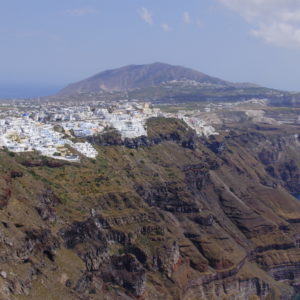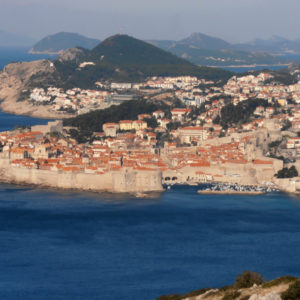Video courtesy of Visit Greece National Tourism
Greece has a deep respect for tradition and a passion for good times. Having exported chaos, drama, tragedy and democracy before most nations were staying up late enough to want souvlaki, Greece boasts an unrivaled legacy. Therefore, don’t expect a visit to be a sober study of the ancient world – the Greek propensity for partying dates back to Dionysus.
The Plaka is the old Turkish Quarter of Athens, and virtually all that existed of the city when Athens was declared the capital of independent Greece. The Plaka holds a compelling fascination and is still the most picturesque part of the city. On the protected side of windswept Mount Parnassus, a hundred miles northwest of Athens, lies Delphi, one of the most beautiful sites in Europe where the Delphi Oracle foretold the destiny of man. Here lies the Temple of Apollo where the Oracle lived, built in the 6th century B.C. at the height of its importance. See the Sacred Way, the stadium, and the Castillian fountain, where pilgrims cleansed themselves in preparation for consulting the Oracle.
Built on the banks of the river Penios, Olympia is beautiful, green and placid. Walking through the ancient Altis, it is easy to make out the buildings as they once were: the Palaestra and Gymnasium, the temple of Hera, the Mitroon, the Echo Portico, the treasuries and, in particular, the magnificent temple of Zeus which housed the gold and ivory statue of the god made by Phidias, one of the Seven Wonders of the Ancient World. It is here, where the origins of the Olympic Games are rooted in legend in honor of Zeus. Legend has it that Hercules was one of the first victors.
Santorini, the island of Thira, also known as Santorini, is considered the most spectacular of the Greek islands. Santorini was formed from the remains of an ancient volcano eruption. Excavations began in 1967 by the late Professor Spyridon Marinatos, who was killed at the site in 1974. His excavations uncovered an ancient city, which had been buried beneath volcanic ash. The buildings date to the late 16th century BC and some ruins are two and three stories in height.
Crete, has a distinguished and amazing history. As early as 2000 B.C., the Minoans who lived here had a remarkably advanced society as a maritime trading empire. This was first based on myth, and later substantiated by excavations early this century. The island occupied a unique position between the eastern and western worlds even then, and we now know from the art and artefacts found on Crete that Greece, Rome, and Byzantium had a great influence in the island’s history. The north coast has been significantly developed while the mountainous interior is still wild and quite remote. It is also possible to move around the island by taking the frequent ferries which transverse the coasts between small villages, which are otherwise quite removed from civilization.
Corfu, the island of Kerkyra, also known as Corfu, is one of the most desirable Greek Islands, set in the clear blue-green waters of the lonian Sea at the mouth of the Adriatic. The scenery is breath-taking with thousands of olive trees that carpet the landscape and plants that are unique to the sacred land, with bougainvillea, wisteria and sweet-smelling jasmine abundant all over the countryside. With its astonishing blue waters lapping the rocky, pine-rimmed coves, Corfu is said to be the inspiration for Prospero’s island in Shakespeare’s The Tempest. To this day, Corfu remains true to its rural roots: an enchanting mixture of simplicity and elegance, a sleepy island, hidden away from the touristic honeypots.
Due to the country’s geographical position, its rugged relief and its distribution between the mainland and the sea, there is great variation in Greece’s climate.
In summer, the dry hot days are cooled by seasonal winds called the meltemi, while mountainous regions have generally lower temperatures.
The winters are mild in lowland areas, with a minimum amount of snow and ice, yet, mountains are usually snow-covered. Moreover, a common phenomenon is the occurrence of different climactic conditions during the same season (for instance, mild heat in coastal areas and cool temperatures in mountainous regions).
Showing all 2 results


